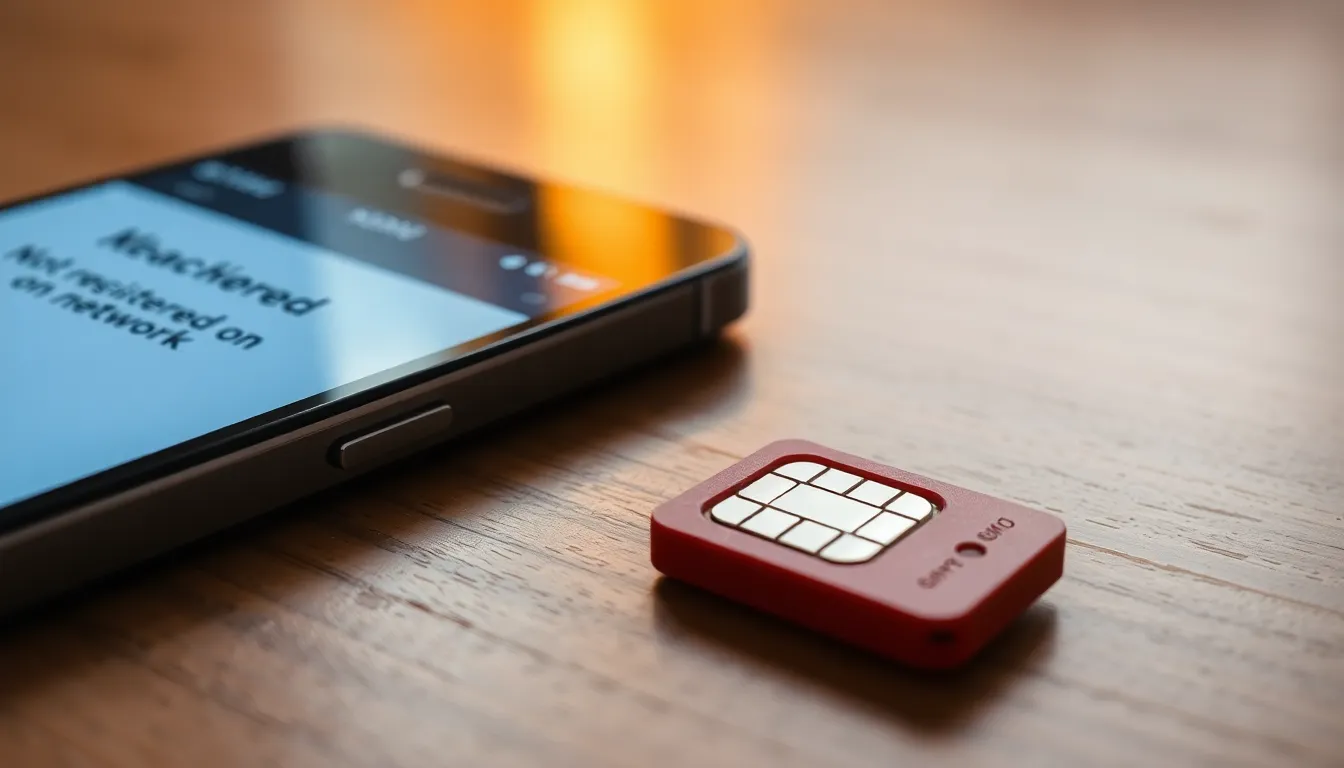Imagine this: you’re all set to make an important call, but your phone decides to play hard to get. “Not registered on network,” it taunts. Frustrating, right? This isn’t just a tech hiccup; it’s a modern-day tragedy that can leave anyone feeling stranded. Whether it’s a brand-new device or a trusty old companion, the dreaded registration error can turn a simple communication tool into a paperweight.
But fear not! This article dives into the quirky world of phones refusing to register on a network. From the common culprits to the not-so-obvious fixes, it’s time to reclaim your connection. Get ready to laugh, learn, and troubleshoot like a pro, because your phone’s social life is about to get a major upgrade.
Table of Contents
ToggleOverview of Network Registration Issues
Network registration issues can disrupt phone functionality, making it difficult for users to connect to services. Understanding these issues is essential for effective troubleshooting.
What Does “Not Registered on Network” Mean?
When a phone displays “not registered on network,” it indicates that the device cannot connect to the selected mobile network. This problem prevents users from making calls and sending messages. The root cause often lies in communication problems between the phone and the network provider. Device settings may also play a significant role. Users might find it helpful to check whether their SIM card is properly inserted or if the device software is up to date.
Common Causes of Network Registration Failures
Several factors contribute to registration failures. Signal strength can impact connectivity, especially in remote areas. Another frequent cause includes SIM card issues, such as damage or poor contact. Network outages might occur temporarily, causing sporadic problems. Additionally, outdated software can hinder a phone’s ability to connect to the network. Changing network settings unintentionally can also disrupt the registration process.
Troubleshooting Steps for Users

Phones sometimes display the “not registered on network” error, causing connectivity issues. Users can follow these troubleshooting steps for better performance.
Checking SIM Card and Device Compatibility
Verifying SIM card compatibility is essential. Users must ensure the SIM card fits the device specifications. Insert the card properly into the slot; a loose fit may cause connectivity problems. Observe for visible damage on the SIM card; scratches or cracks may impede its function. Consult the device manual for supported network frequencies. If the SIM card remains incompatible, consider replacing it with one that matches the device requirements.
Restarting the Device and Network Settings
Restarting the device often resolves network issues. Power off the phone, wait 30 seconds, and then power it back on. This process may refresh network connections and clear temporary glitches. Users can also reset the network settings to restore factory defaults. Access the settings menu, select the appropriate option, and confirm the reset. After restarting, it’s vital to reconnect to the desired network for optimal performance.
Updating Software and Carrier Settings
Keeping software updated ensures improved device functionality. Navigate to the settings menu to check for available updates. Install any pending software updates promptly; they can address connectivity issues. Carrier settings updates are equally important. When prompted, initiate the update process for the latest settings from the network provider. Regularly checking for updates enhances device compatibility with the network, ultimately preventing the “not registered on network” issue.
Understanding Network Compatibility
Understanding network compatibility is crucial for resolving the “not registered on network” issue. Compatibility ensures that devices properly connect with mobile networks to enable calls and messages.
Importance of Carrier Locking
Carrier locking affects many devices. Some phones are locked to specific carriers, limiting network access. Unlocking a carrier-locked phone improves compatibility with other networks, granting users more choices. Covered by stipulations, unlocking may require a request to the carrier. Customers often face barriers when switching providers due to these restrictions. Keeping flexibility in mind allows users to choose plans that best meet their needs.
Dual-SIM Devices and Network Registration
Dual-SIM devices present unique challenges regarding network registration. Each SIM slot functions independently, which complicates connectivity. Users generally need to ensure both SIM cards are compatible with their respective networks. Prioritizing one SIM over the other helps avoid confusion. When one SIM experiences network issues, the other may still work. Understanding these dynamics allows for better management of phone settings and enhances connectivity experiences.
Solutions for Persistent Issues
Devices showing the “not registered on network” error can be frustrating. Several solutions can help resolve persistent connectivity problems.
Contacting Your Carrier for Assistance
Reaching out to the carrier can be a key step in solving network registration issues. Carriers often provide support through customer service hotlines or online chat. They can help troubleshoot the specific account or service-related issues. For instance, verifying that the account is active and in good standing can eliminate problems. Representatives typically check for network outages in the area as well. User experiences vary, so specific carrier procedures may differ depending on the service provider.
Using Alternative Network Providers
Exploring alternative network providers offers another option for users facing connectivity challenges. Switching to a different carrier might resolve the registration issue if the current provider has limited coverage. Many companies offer trial periods, allowing users to test service before committing. Checking compatibility between devices and alternative networks can help as well. Users often discover that certain providers have better coverage in specific areas, improving overall connectivity.
Factory Resetting Your Device
Factory resetting the device may restore lost functionality and resolve any network registration errors. This action reverts the phone to its original settings, erasing custom configurations. Users can access the reset option through the settings menu, where all data is deleted. Important data like contacts or messages should be backed up beforehand to prevent loss. After the reset, users must set up their device anew, ensuring all past issues are eliminated.
Addressing the “not registered on network” error can significantly enhance a user’s connectivity experience. By understanding the underlying causes and implementing the suggested troubleshooting steps, individuals can regain access to essential phone functions. Whether it’s checking SIM compatibility or updating software, taking proactive measures can prevent future disruptions.
For those still facing challenges, reaching out to their carrier or exploring alternative network options may provide the necessary solutions. Ultimately, a little knowledge and effort can go a long way in ensuring seamless communication and connectivity.




